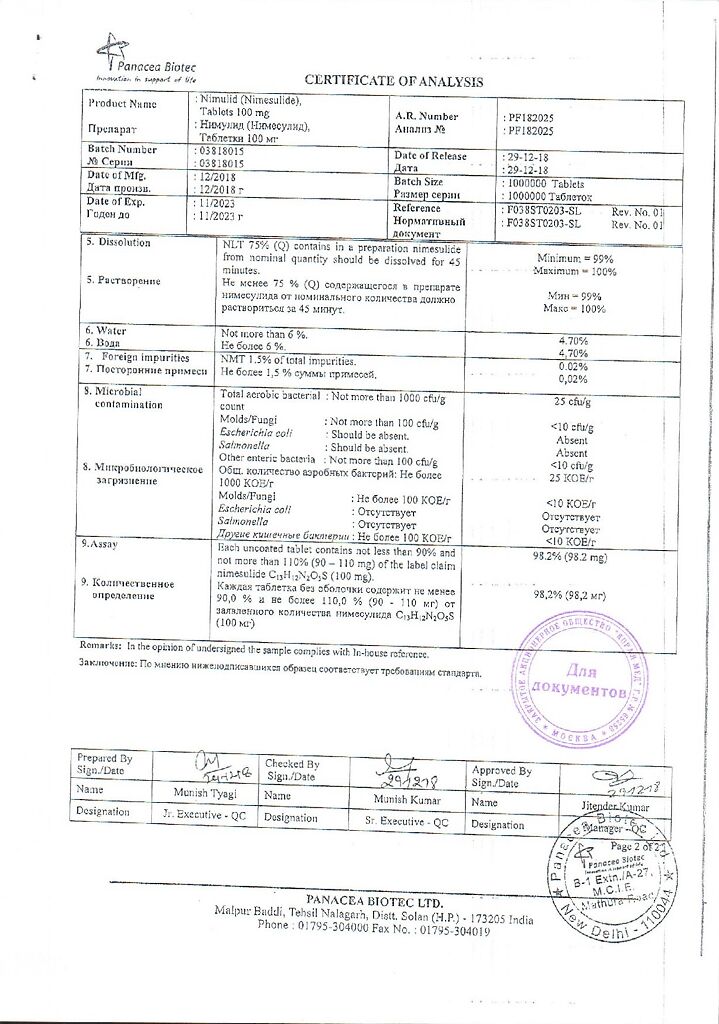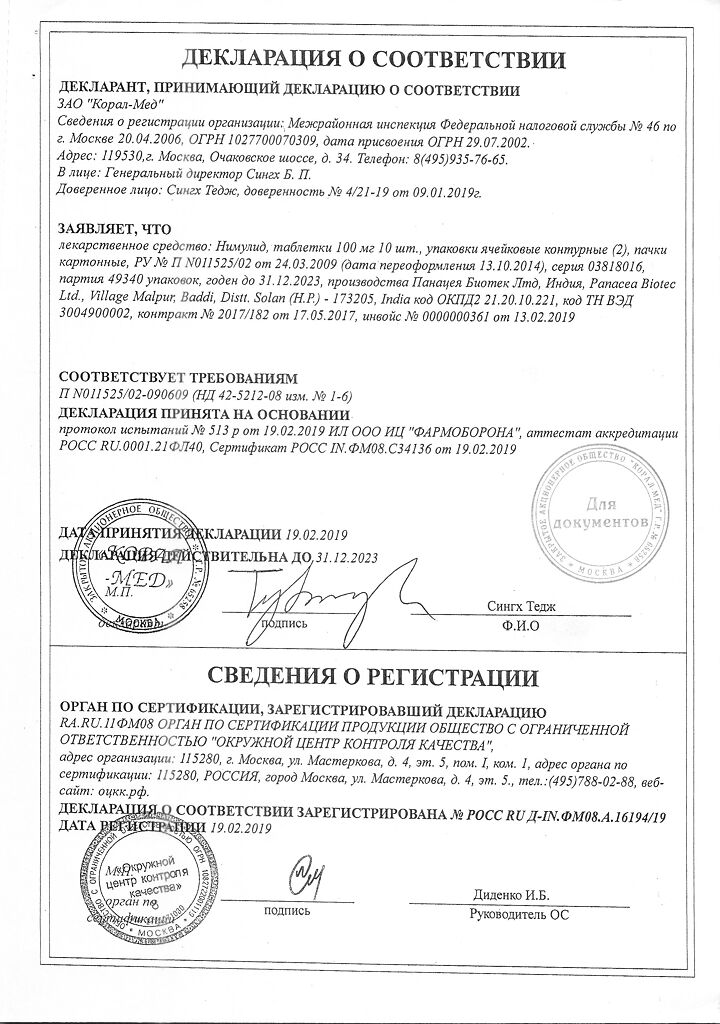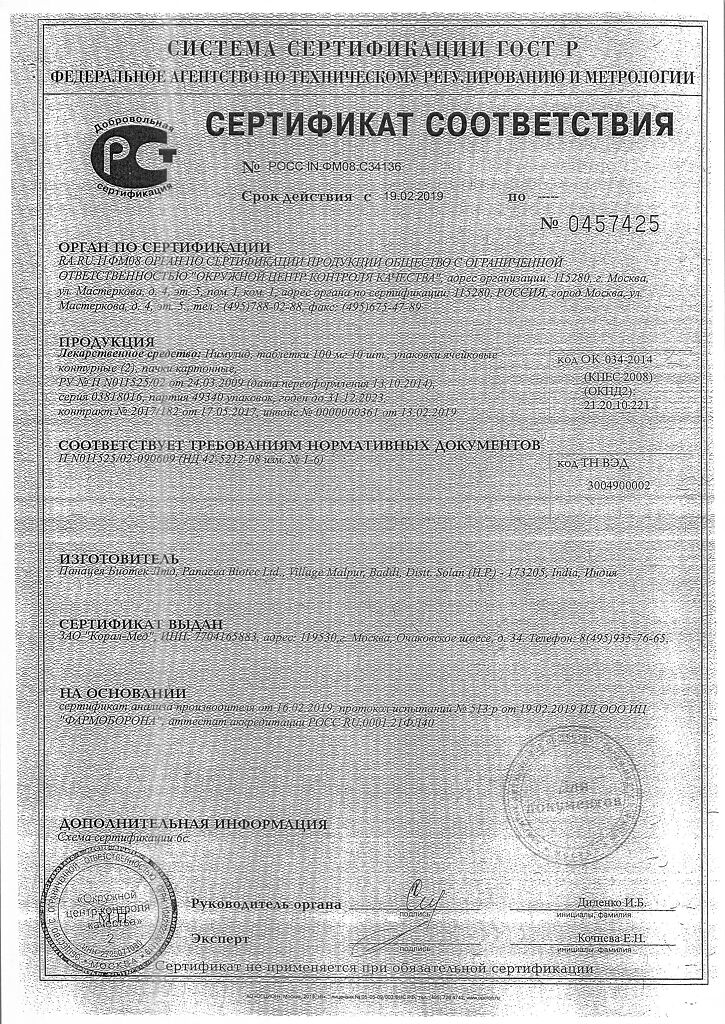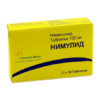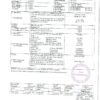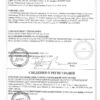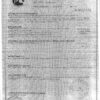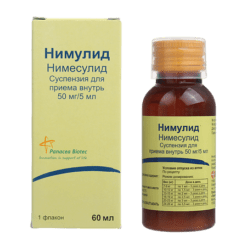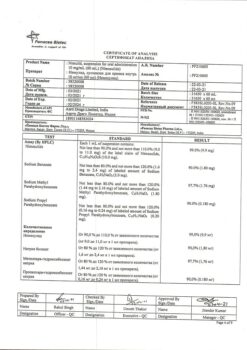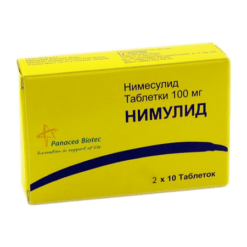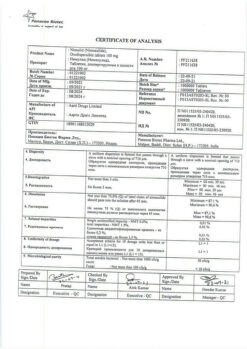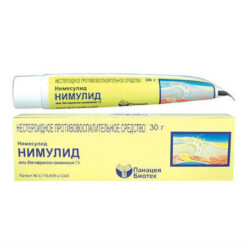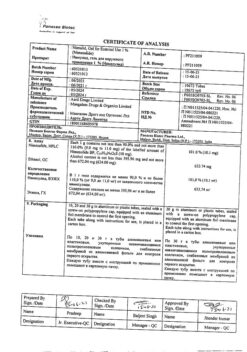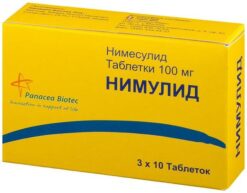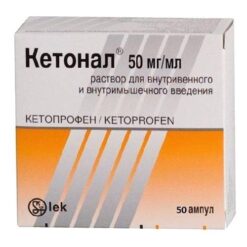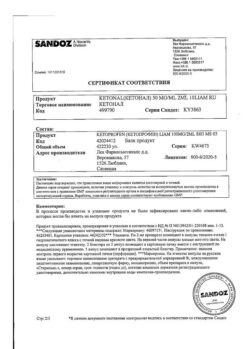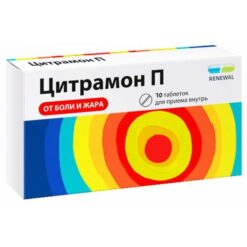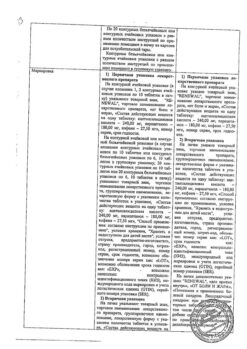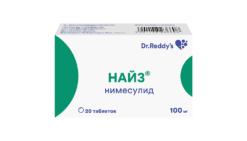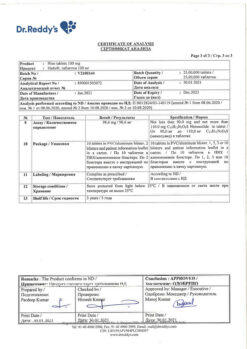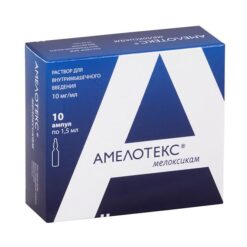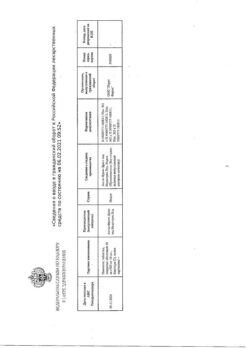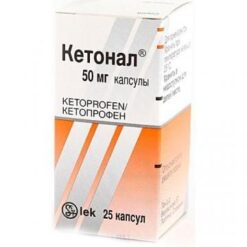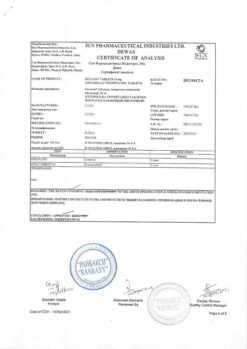No products in the cart.
Nimulide, tablets 100 mg 20 pcs
€11.43 €10.00
Description
Nimulide is an analgesic, anti-inflammatory.
Pharmacodynamics
Nimulide is an NSAID of the sulfonanilide class. It has anti-inflammatory, analgesic and antipyretic effects.
Nimesulide refers to NSAIDs, the mechanism of action of which is associated with selective inhibition of COX-2 and effects on several other factors – inhibition of platelet-activating factor, tumor necrosis factor alpha, inhibition of proteinases and histamine. By selectively inhibiting COX-2 it decreases biosynthesis of PG in inflammation focus, has less pronounced inhibitory effect on COX-1 (causes less frequent side effects associated with inhibition of PG synthesis in healthy tissues).
Pharmacokinetics
Absorption when ingested is high (food intake reduces absorption rate without affecting its degree). Binding with plasma proteins – 95%, with erythrocytes – 2%, with lipoproteins – 1%, with acidic alpha 1-glycoproteins – 1%. Changing the dose does not affect the degree of binding. Cmax – 3.5-6.5 mg/l. Vd – 0.19-0.35 l/kg.
It penetrates into the tissues of the female genitalia, where after a single administration its concentration is about 40% of the plasma concentration. It penetrates well into the acidic environment of the inflammation focus (40%), synovial fluid (43%). Easily penetrates through histohematic barriers.
It is metabolized in liver by tissue monooxygenases. The main metabolite – 4-hydroxynimesulide (25%) – has similar pharmacological activity, but due to the reduced size of the molecules is able to rapidly diffuse through the COX-2 hydrophobic channel to the active binding center of the methyl group. 4-Hydroxynymesulide is a water-soluble compound that does not require glutathione and phase II metabolic conjugation reactions (including sulfation, glucuronidation) for excretion.
The T1/2 of nimesulide is about 1.56-4.95 h, that of 4-Hydroxynimesulide is 2.89-4.78 h. 4-Hydroxynimesulide is excreted by the kidneys (65%) and with the bile (35%); it undergoes enterohepatic recirculation.
In patients with renal insufficiency (creatinine Cl 1.8-4.8 l/h or 30-80 ml/min), as well as in children and elderly persons the pharmacokinetic profile of nimesulide does not change significantly.
Indications
Indications
Active ingredient
Active ingredient
Composition
Composition
Active ingredient:
Nimesulide 100 mg;
Associates:
lactose,
croscarmellose sodium,
colloidal silicon dioxide,
corn starch,
povidone,
sodium docusate,
Polysorbate,
Hydrochloric acid*,
Purified water*,
Magnesium stearate (* – removed during manufacture).
How to take, the dosage
How to take, the dosage
Adults and children over 12 years of age (body weight over 40 kg) orally Nimulide is prescribed 1 tablet 2 times a day.
The tablets are taken after meals with enough water. The maximum daily dose is 5 mg/kg.
Patients with chronic renal insufficiency require reduction of the daily dose of Nimulide to 100 mg.
Course of treatment: as prescribed by the physician.
Interaction
Interaction
The effect of drugs that reduce blood clotting is enhanced with their simultaneous use with nimesulide.
Nimesulide may reduce the effect of furosemide. Reduces the therapeutic effect of antihypertensive drugs. Nimesulide increases the onset of side effects when concomitant use of methotrexate.
Plasma lithium levels are increased when concomitant administration of lithium and nimesulide.
Nimesulide may increase the nephrotoxic effect of cyclosporine on the kidneys. Use with glucocorticosteroids, serotonin reuptake inhibitors increases the risk of GI bleeding.
Special Instructions
Special Instructions
Nimulide should be used with caution in patients who are prone to bleeding, patients with upper gastrointestinal disorders or patients receiving anticoagulants.
Because Nimulide is partially excreted by the kidneys, its dosage should be reduced for patients with impaired renal function, depending on creatinine clearance rates.
Given the reports of visual impairment in patients taking other NSAIDs, treatment should be stopped immediately if any visual impairment appears and the patient should be examined by an ophthalmologist.
The drug may cause fluid retention in the tissues, so patients with high blood pressure and with cardiac abnormalities should use Nimulide with extreme caution.
To reduce the risk of gastrointestinal adverse events, the lowest effective dose should be used for the shortest possible course.
Impact on driving and operating ability
Patients who have pronounced side effects such as dizziness, drowsiness, blurred vision should be careful when driving motor vehicles and engaging in other potentially dangerous activities requiring increased concentration and quick psychomotor reactions.
Contraindications
Contraindications
Side effects
Side effects
The digestive system: often – diarrhea, nausea, vomiting; infrequently – constipation, flatulence, gastritis; very rarely – abdominal pain, stomatitis, tarry stools, gastrointestinal bleeding, gastric or duodenal ulcer and/or perforation.
CNS disorders: infrequent – dizziness; rare – feeling of fear, nervousness, nightmares; very rare – headache, somnolence, encephalopathy (Reye syndrome).
Respiratory system: infrequent dyspnea; very rare – bronchospasm; exacerbation of bronchial asthma is possible.
Cardiovascular system: infrequent arterial hypertension; rare – tachycardia, hemorrhages, hot flashes.
Sensory organs: rare – blurred vision.
Skin and mucous membranes: infrequent itching, rash, increased sweating; rarely erythema and dermatitis.
Hepatic and biliary system disorders: often – increased activity of liver transaminases; very rarely – hepatitis, hepatitis fulminant, jaundice, cholestasis.
As to the urinary system: infrequent – edema; rare – dysuria, hematuria, urinary retention, hyperkalemia; very rare – renal failure, oliguria, interstitial nephritis.
Hematopoietic system: rarely – anemia, eosinophilia; very rarely – thrombocytopenia, pancytopenia, purpura, prolongation of bleeding time.
Allergic reactions: rare – hypersensitivity reactions, very rare – anaphylactoid reactions, urticaria, angioedema, facial edema, erythema multiforme, including Stevens-Johnson syndrome, toxic epidermal necrolysis (Lyell’s syndrome).
General reactions: rarely – general weakness; very rarely – hypothermia.
In case of other side effects not mentioned above or a worsening of your well-being, please consult your physician immediately.
Overdose
Overdose
Symptoms: apathy, drowsiness, nausea, vomiting. Gastrointestinal bleeding, arterial hypertension, acute renal failure, respiratory depression may occur.
Treatment: symptomatic treatment of the patient is required, there is no specific antidote. If overdose occurred within the last 4 hours it is necessary to induce vomiting, provide intake of activated charcoal (60-100 g per adult), osmotic laxatives. Forced diuresis and hemodialysis are ineffective due to high protein binding of the drug.
Similarities
Similarities
Additional information
| Shelf life | 3 years. |
|---|---|
| Conditions of storage | In a dry, light-protected place at a temperature not exceeding 25 °C. |
| Manufacturer | Panacea Biotec, India |
| Medication form | pills |
| Brand | Panacea Biotec |
Other forms…
Related products
Buy Nimulide, tablets 100 mg 20 pcs with delivery to USA, UK, Europe and over 120 other countries.


